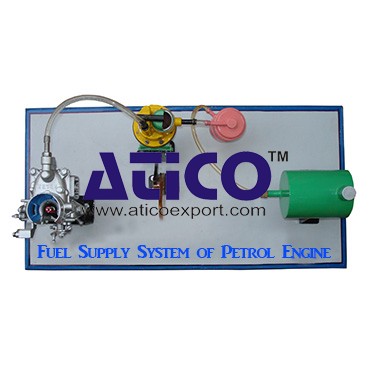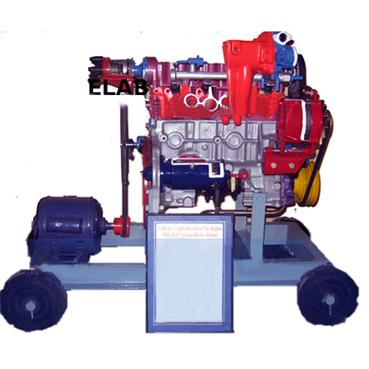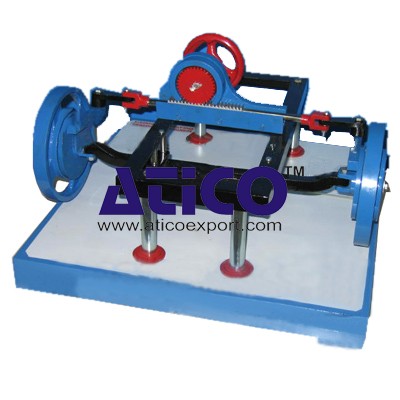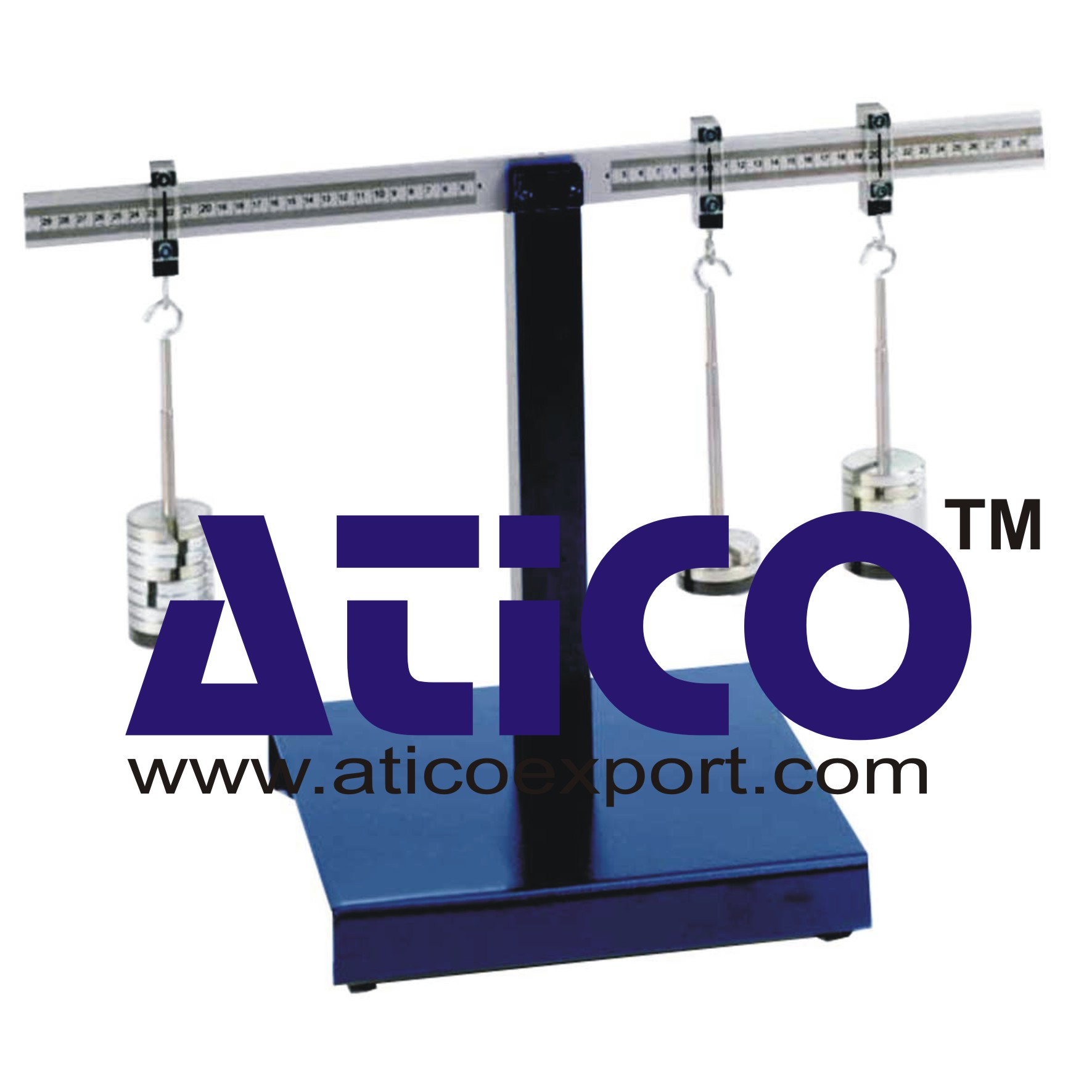Gas Turbine
Categories: Engineering Lab EquipmentThe trainer investigates the behaviour of a system in a two-shaft arrangement (vehicle drive, ship’s propulsion or generator drive) and of a jet engine (aircraft’s propulsion). At the core of the trai...
Product
Description
The trainer investigates the behaviour of a system in a two-shaft arrangement (vehicle drive, ship’s propulsion or generator drive) and of a jet engine (aircraft’s propulsion). At the core of the trainer are a so-called gas generator and a free-running power turbine. The gas generator consists of a radial compressor, a combustion chamber and a radial turbine. The compressor and turbine are mounted on a shaft. Depending on the arrangement, the energy of the exhaust gas stream is either converted into mechanical energy in the free-running power turbine (single-shaft arrangement) or accelerated and transformed into thrust via a nozzle (two-shaft arrangement). It is possible to convert from a single-shaft to a two-shaft arrangement in just a few actions.
The gas turbine works as an open cyclic process, with the ambient air being drawn out and fed back in. Intake and exhaust silencers reduce the noise in operation of the power turbine. The use of propane as the combustion gas ensures clean, odourless operation. A start-up fan is used to start the gas turbine. Relevant measuring values are recorded by sensors and indicated on the display and control panel. At the same time, the measured values can also be transmitted directly to a PC via USB. The data acquisition software is included.
Learning Objectives/Experiments
Familiarisation with the function and typical behaviour during operation of a gas turbine
Operation as jet engine
Operation as power turbine
Determining effective power
Thrust measurement
Determining specific fuel consumption
Recording the characteristic of the power turbine
Determining the system efficiency
Features
Operation with power turbine or as jet engine with propelling nozzle
Simple model of a gas turbine
Display and control panel with illustrative process schematic
Propane gas as fuel
Specification
Function and behaviour during operation of a gas turbine
Single-shaft arrangement for operation as jet engine
Two-shaft arrangement for operation with power turbine
Start-up fan to start the gas turbine
Asynchronous motor with frequency converter as generator
Conversion of generated electrical energy into heat using four 600W braking resistors
Technical data
Gas generator (compressor and high-pressure turbine)
speed range: 60000…125000min-1
max. pressure ratio: 1:2,2
max. mass flow rate (air): 0,125kg/sec
max. fuel consumption: 120g/min
Power turbine
speed range: 10000…40000min-1
mechanical power: 0…2kW
electrical power: 0…1,5kW
sound level at 1m distance: max. 80dB(A)
temperature exhaust gas: 700°C
Operation as jet engine
thrust measurement: 0…50N
sound level at 1m distance: max. 110dB(A)
Measuring ranges
temperature: 4x 0…200°C / 3x 0…1200°C
speed: 0…199999min-1
electrical power: 0…1999W
flow rate: 0…100L/s (air)
flow rate: 1,5…10,5kg/h (fuel)
fuel supply pressure: 0…25bar
nozzle pressure: 0…4bar (fuel)
combustion chamber pressure loss: 0…100mbar
pressure (inlet): 0…2,5bar (high-pressure turbine)
pressure (inlet): 0…300mbar (power turbine)
230V, 50Hz, 1 phase, 400V, 50Hz, 3 phases
400V, 60Hz, 3 phases, 230V, 60Hz, 3 phases
quick overview :
The trainer investigates the behaviour of a system in a two-shaft arrangement (vehicle drive, ship’s propulsion or generator drive) and of a jet engine (aircraft’s propulsion). At the core of the trainer are a so-called gas generator and a free-running power turbine. The gas generator consists of a radial compressor, a combustion chamber and a radial turbine. The compressor and turbine are mounted on a shaft. Depending on the arrangement, the energy of the exhaust gas stream is either converted into mechanical energy in the free-running power turbine (single-shaft arrangement) or accelerated and transformed into thrust via a nozzle (two-shaft arrangement). It is possible to convert from a single-shaft to a two-shaft arrangement in just a few actions.
The gas turbine works as an open cyclic process, with the ambient air being drawn out and fed back in. Intake and exhaust silencers reduce the noise in operation of the power turbine. The use of propane as the combustion gas ensures clean, odourless operation. A start-up fan is used to start the gas turbine. Relevant measuring values are recorded by sensors and indicated on the display and control panel. At the same time, the measured values can also be transmitted directly to a PC via USB. The data acquisition software is included.
Learning Objectives/Experiments
Familiarisation with the function and typical behaviour during operation of a gas turbine
Operation as jet engine
Operation as power turbine
Determining effective power
Thrust measurement
Determining specific fuel consumption
Recording the characteristic of the power turbine
Determining the system efficiency
Features
Operation with power turbine or as jet engine with propelling nozzle
Simple model of a gas turbine
Display and control panel with illustrative process schematic
Propane gas as fuel
Specification
Function and behaviour during operation of a gas turbine
Single-shaft arrangement for operation as jet engine
Two-shaft arrangement for operation with power turbine
Start-up fan to start the gas turbine
Asynchronous motor with frequency converter as generator
Conversion of generated electrical energy into heat using four 600W braking resistors
Technical data
Gas generator (compressor and high-pressure turbine)
speed range: 60000…125000min-1
max. pressure ratio: 1:2,2
max. mass flow rate (air): 0,125kg/sec
max. fuel consumption: 120g/min
Power turbine
speed range: 10000…40000min-1
mechanical power: 0…2kW
electrical power: 0…1,5kW
sound level at 1m distance: max. 80dB(A)
temperature exhaust gas: 700°C
Operation as jet engine
thrust measurement: 0…50N
sound level at 1m distance: max. 110dB(A)
Measuring ranges
temperature: 4x 0…200°C / 3x 0…1200°C
speed: 0…199999min-1
electrical power: 0…1999W
flow rate: 0…100L/s (air)
flow rate: 1,5…10,5kg/h (fuel)
fuel supply pressure: 0…25bar
nozzle pressure: 0…4bar (fuel)
combustion chamber pressure loss: 0…100mbar
pressure (inlet): 0…2,5bar (high-pressure turbine)
pressure (inlet): 0…300mbar (power turbine)
230V, 50Hz, 1 phase, 400V, 50Hz, 3 phases
400V, 60Hz, 3 phases, 230V, 60Hz, 3 phases
Product
Reviews
add Review
reviews
No Review Yet.
Copyrights © 2025 All Rights Reserved by Atico














Product
Reviews
add Review
reviews
No Review Yet.